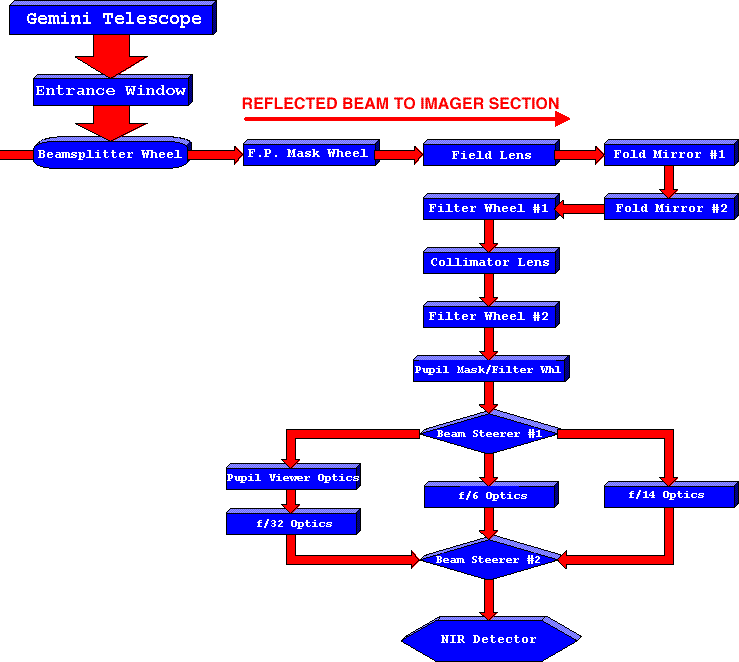
Capability Summary
- AO (NGS, LGS, Super Seeing) available with Altair
- Total wavelength range = 1−5 µm
Imaging (Read more)
- Three choices of cameras:
| Camera | Sampling | FOV | comments |
| f/32 | 0.022"/pixel | 22"x22" | best suited for 2.5−5 µm |
| f/14 | 0.050"/pixel | 51" x 51" | no M band |
| f/6 | 0.117"/pixel | 20"×120" | not offered with AO best suited for 1−2.5 µm |
- A large number of broad- and narrow band filters
Spectroscopy
- DECOMMISSIONNED
Guiding Options (Read more)
- PWFS
- Altair (NGS, LGS, LGS+P1)
Get the sensitivity
Get to the integration time calculator
NIRI was built by the University of Hawaii's Institute for Astronomy.

Announcements
Instrument Team
Instrument Scientist
